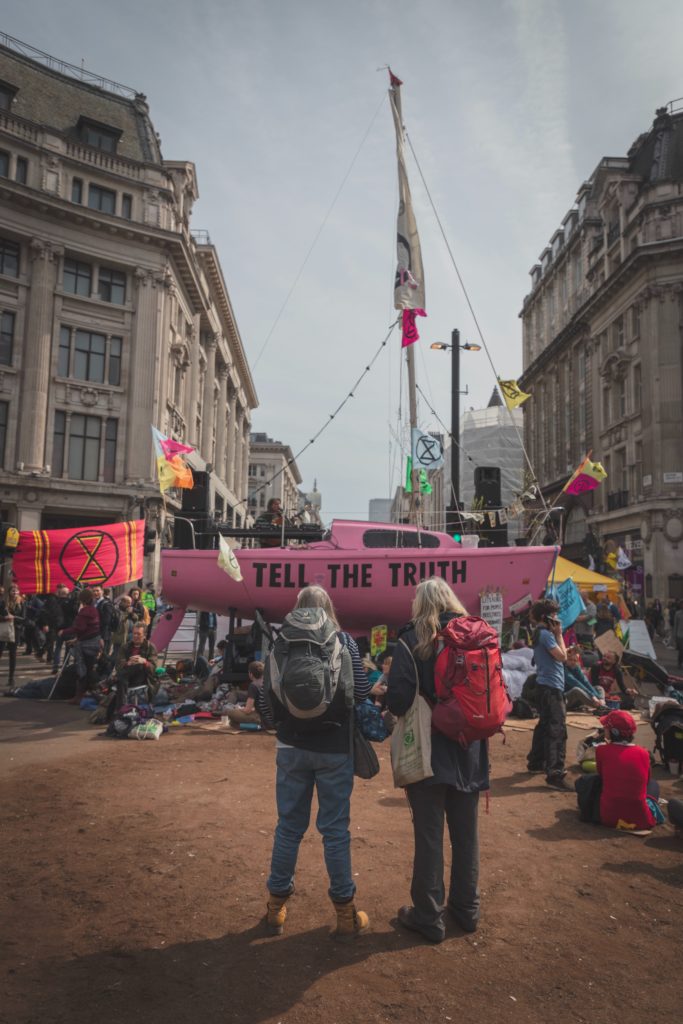In a book released this month, Christiana Figueres, the diplomat who led the negotiations of the Paris Agreement, calls for non-violent civil disobedience to force institutions to respond to the climate crisis. She supports Greta Thumberg and the Extinction Rebellion movement, which has just multiplied spectacular actions occupying the premises and operational activities of various investors and industrials to force them to take climate issues more seriously. Here’s our insight about this shift, which clearly isn’t a peripheral event.
This commitment acknowledges the insufficiency of public and private action on the climate issue. It is a signal that sets the tone for what will increasingly be required of companies and investors in the years to come: to create value and jobs while demonstrating the climate compatibility of their activities. These transformations do not come about without resistances, and quickly raise the questions of a just transition for jobs, consumers and territorial areas.
We therefore invite companies and investors to learn three lessons from this new situation:
1. Any Sector is at Risk
Every company and asset manager must adopt a set of measures combining reduction, substitution and circularisation of services and products, compatible with a 1.5 degree trajectory. This is the only way to anticipate the legal risk, the risk of asset depreciation and the risk of the Kodak effect, so as to adapt at the right time. Already in 2000, and again in 2010, we worked on 10-year climate strategies with objectives that seemed difficult and were often far exceeded. We have to look ahead to 2025 and 2030 with objectives that are equal to the challenges of competitiveness and necessary to protect assets.
2. Regulatory and voluntary approaches to date provide a useful but clearly insufficient response
A brief review of public and private actions identified around the world, available for example on this UN NAZCA platform, provides inspiration for strengthening one’s own actions. Aligning with these actions, however, does not provide sufficient guarantees to ensure the protection of assets against the climate risk of depreciation, nor to anticipate the Kodak risk linked to the acceptability of products and services that are not compatible with the climate issues at stake.
3. Leverage Just Transition as Constructive Framework for Action
Reflecting on the Just Transition makes it possible to move from a logic of collective dilution of responsibilities to a dynamic of joint responsibility of stakeholders interested in a common denominator which can be an area of activity, a company, a territory from the point of view of the evolution of economic activities, jobs, taxes, the value of the assets considered, under constraint and transformation brought about by the new climate situation in progress.
Conclusion: New Era for Stakeholder Engagement
For the years to come, we believe climate will drive more attention from society, as well as less interest for constructive dialogue. In response to legal as well as societal expectations, companies and investors will only be able to take part and lead constructive dialogue if able to show a trusted pathway combining alignment with Paris Agreement expectations (e.g. business aligned with 1,5 degre trajectory), together with Just Transition considerations. Conflicts and useless dialogue will increase in the alternative.
Author of several books and resources on business, sustainability and responsibility. Working with top decision makers pursuing transformational changes for their organizations, leaders and industries. Working with executives improving resilience and competitiveness of their company and products given their climate and human right business agendas. Connect with Farid Baddache on Twitter at @Fbaddache.





